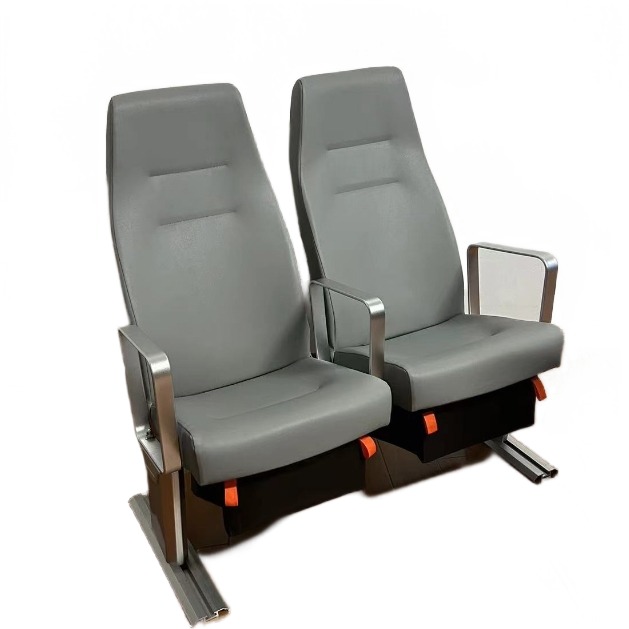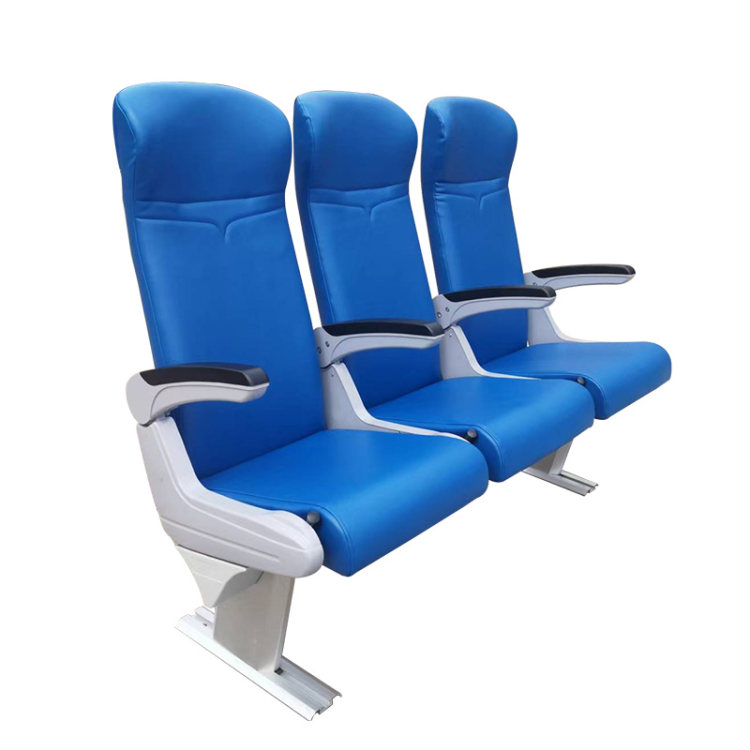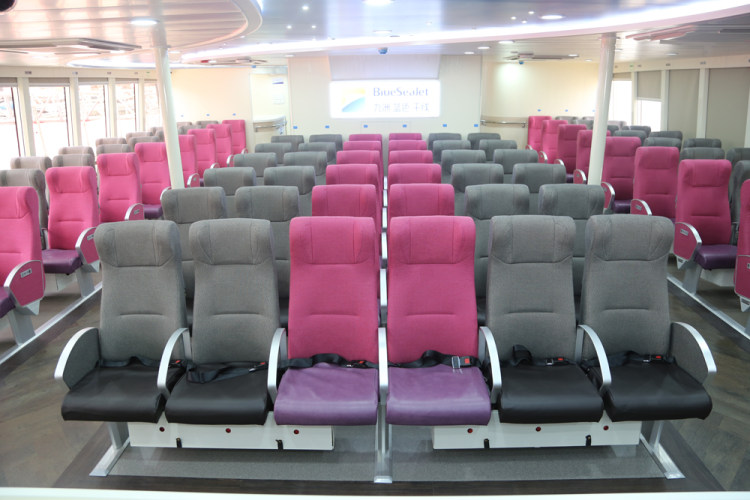Why Choose Modular Marine Passenger Seats for Easy Installation and Maintenance
Table of Contents
The evolution of marine passenger seats has brought about innovative designs that prioritize functionality, comfort, and durability. One such innovation is the modular marine passenger seat, designed to streamline installation and maintenance processes. This article delves into the benefits of modular designs and how the modular marine passenger seats enhance efficiency in installation and maintenance.

Why Easy Installation and Maintenance for Marine Passenger Seats are Important
- Enhanced Safety Standards: Marine environments are inherently challenging, with exposure to moisture, salt, and vibration. Easy installation ensures seats are securely fixed, reducing risks of accidents caused by loose or improperly installed seats. Simplified maintenance also ensures the marine passenger chairs remain functional and safe over time.
- Minimized Downtime: Time is critical in the marine industry. Easy-to-install seats allow for quick replacements or upgrades, minimizing downtime during routine maintenance or retrofits. This ensures vessels stay operational and schedules remain unaffected.
- Cost Efficiency: Simplifying the installation and maintenance process reduces labor costs. Operators spend less on specialized technicians or extended dock times, resulting in lower overall operational expenses.
- Improved Passenger Comfort and Experience: Well-maintained seats ensure passengers have a comfortable experience, fostering satisfaction and loyalty. Regular upkeep enabled by easy maintenance keeps seats in optimal condition.
- Adaptability to Vessel Design Changes: Easy installation supports modular designs, allowing seat layouts to be reconfigured quickly to accommodate changes in vessel use or capacity requirements.
- Longevity of Seating Systems: Marine seating exposed to harsh environmental conditions requires regular upkeep. Maintenance-friendly designs prolong the lifespan of seats by facilitating easy access for cleaning, repairs, or component replacement.
- Compliance with Regulations: Marine industry standards often mandate periodic inspections and maintenance. Easy maintenance ensures compliance with these regulations, avoiding penalties or operational delays.
- Support for Sustainable Practices: Simplified maintenance can promote sustainability by allowing damaged parts to be repaired or replaced without discarding the entire seat, reducing waste and material usage.

Advantages of Modular Marine Passenger Seats in Easy Installation and Maintenance
Modular marine passenger seats not only enhance passenger experience but also streamlines installation and maintenance, making them a popular choice for modern vessels.
1. Quick and Effortless Installation
- Pre-Assembled Components: Modular chairs often come partially assembled, reducing installation time and complexity.
- Standardized Design: Uniform components simplify the alignment and mounting process, ensuring precise and hassle-free setup.
- Adaptability: Modular designs can be customized to fit different deck layouts, allowing operators to optimize seating configurations based on vessel size and purpose.
2. Simplified Maintenance
Interchangeable Parts: Damaged components such as armrests, cushions, or seatbacks can be replaced individually without needing to disassemble the entire seat.
Easy Access: Maintenance-friendly features, such as quick-release mechanisms and removable panels, enable technicians to perform repairs efficiently.
Reduced Downtime: The modular approach minimizes disruptions, as repairs or replacements can be completed quickly, keeping the vessel operational.
3. Enhanced Durability and Resilience
Corrosion Resistance: Modular marine seats are constructed from materials like anodized aluminum or stainless steel, designed to withstand the harsh marine environment.
UV-Protected Upholstery: Fabrics and cushioning materials are treated to resist fading and wear from prolonged exposure to sunlight.
Long Lifespan: High-quality materials and modular designs contribute to extended usability and reduced need for frequent replacements.

4. Cost Efficiency
- Reduced Installation Costs: The ease of installation translates to lower labor costs and quicker deployment.
- Lower Maintenance Expenses: The ability to replace individual parts instead of entire seats reduces material and service costs.
- Minimized Operational Disruptions: Quick repairs ensure continuous passenger service and avoid revenue losses due to downtime.
5. Flexibility and Customization
Modular Configurations: Operators can adapt seating arrangements to accommodate varying passenger capacities or special requirements, such as integrating storage or wheelchair accessibility.
Scalability: Additional seats can be easily added or removed as operational needs evolve, offering unparalleled flexibility for fleet upgrades or changes.
6. Sustainability
Material Reusability: Modular components are often recyclable, contributing to environmentally conscious operations.
Waste Reduction: The ability to replace specific parts reduces waste compared to discarding entire seats.

Installation Process for Modular Marine Passenger Seats
Here is a chart summarizing the step-by-step process for installing modular marine passenger chairs. This systematic approach ensures efficient and reliable installation of modular marine passenger seats.
| Step | Description | Key Actions |
| 1. Preparation | Ensure all tools, seat components, and layout plans are available. | – Review the installation manual. – Mark positions on the deck. |
| 2. Base Installation | Secure the seat bases to the deck using corrosion-resistant fasteners. | – Align bases with marked positions. – Use marine-grade screws or bolts. |
| 3. Seat Module Setup | Attach modular seat units to the bases with provided connectors or quick-release mechanisms. | – Ensure connectors are properly secured. – Tighten all fasteners. |
| 4. Additional Features | Install armrests, folding tables, or accessories included in the design. | – Attach features as per instructions. – Verify functionality of add-ons. |
| 5. Testing | Test seats for stability and functionality (e.g., reclining, swiveling). | – Apply weight to ensure proper anchoring. – Adjust as needed. |
| 6. Final Inspection | Perform a comprehensive review of the installation to confirm alignment and security. | – Inspect fasteners and joints. – Ensure the layout meets design specifications. |

Maintenance Tips for Modular Marine Passenger Seats
Through following routine care practices and addressing potential issues promptly, vessel operators can maximize the efficiency of these marine seating systems.
1. Regular Inspections
- Check for Loose Fasteners: Inspect bolts, screws, and other fasteners periodically to ensure they are secure. Tighten any that are loose to prevent instability.
- Inspect Structural Integrity: Examine frames and joints for signs of stress, cracks, or corrosion. Address any damage immediately to maintain safety.
- Assess Upholstery Condition: Look for tears, stains, or wear on cushions and covers, especially in high-traffic areas.
2. Cleaning and Care
Routine Cleaning
- Use a soft cloth and mild detergent to clean seat surfaces, avoiding abrasive cleaners that could damage finishes.
- For metal parts, wipe down with a damp cloth and dry thoroughly to prevent moisture buildup.
Upholstery Care
- For fabric seats, vacuum regularly to remove dirt and debris.
- For leather or synthetic materials, use appropriate cleaning agents and conditioners to maintain texture and appearance.

3. Lubrication of Moving Parts
- Hinges and Mechanisms: Seats with adjustable features, such as reclining or swiveling, require periodic lubrication.
- Use Marine-Grade Lubricants: These are specially formulated to resist water and prevent corrosion, ensuring smooth operation.
4. Component Replacement
- Replace Worn Parts: Swap out damaged or worn components, such as cushions, armrests, or seatbacks, with manufacturer-recommended replacements.
- Keep Spare Parts on Hand: Stock common replacement parts to reduce downtime during repairs.
5. Corrosion Prevention
- Protective Coatings: Apply anti-corrosion treatments to metal components to combat exposure to saltwater and humidity.
- Rust Removal: If rust appears, clean the affected area with a rust remover and reapply protective coatings.
6. Environmental Considerations
- UV Protection: Use UV-resistant seat covers or treatments to minimize sun damage and fading.
- Moisture Management: Ensure the seating area is well-ventilated to prevent mold and mildew, especially in enclosed cabins.
7. Emergency Maintenance Kit
- Include tools such as wrenches, screwdrivers, and lubricants in an emergency kit.
- Stock essential spare parts, like fasteners and small fittings, to address unexpected repairs during operations.

Overall, the standardized components, flexible configurations and maintenance-friendly design of modular marine passenger seats, make them an excellent choice for vessels prioritizing passenger comfort and operational efficiency. Purchasing the marine passenger chairs adopting modular designs, can lead to reduced labor costs, prolonged seat lifespans and improved passenger satisfaction, ensuring smooth sailing.


